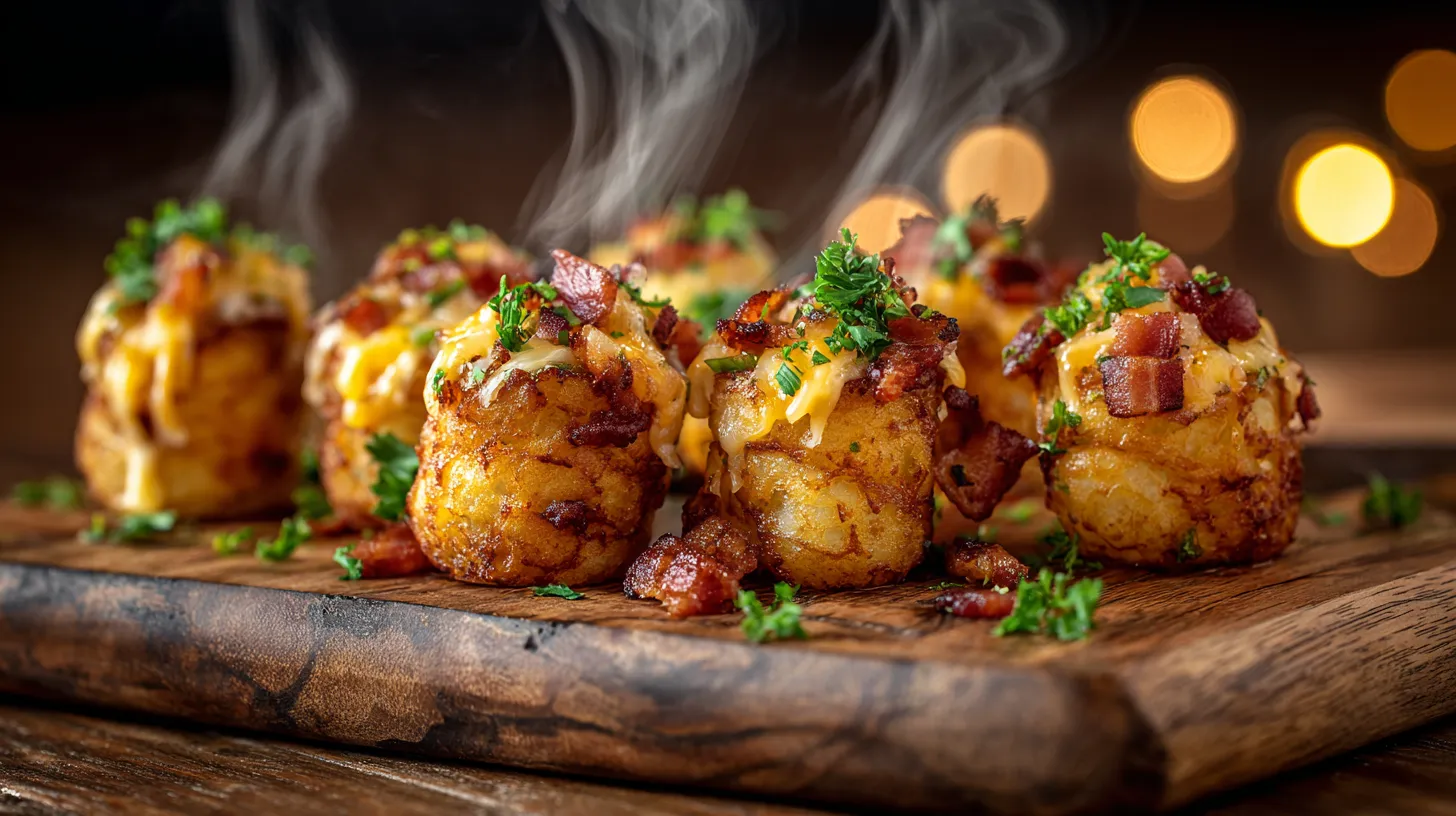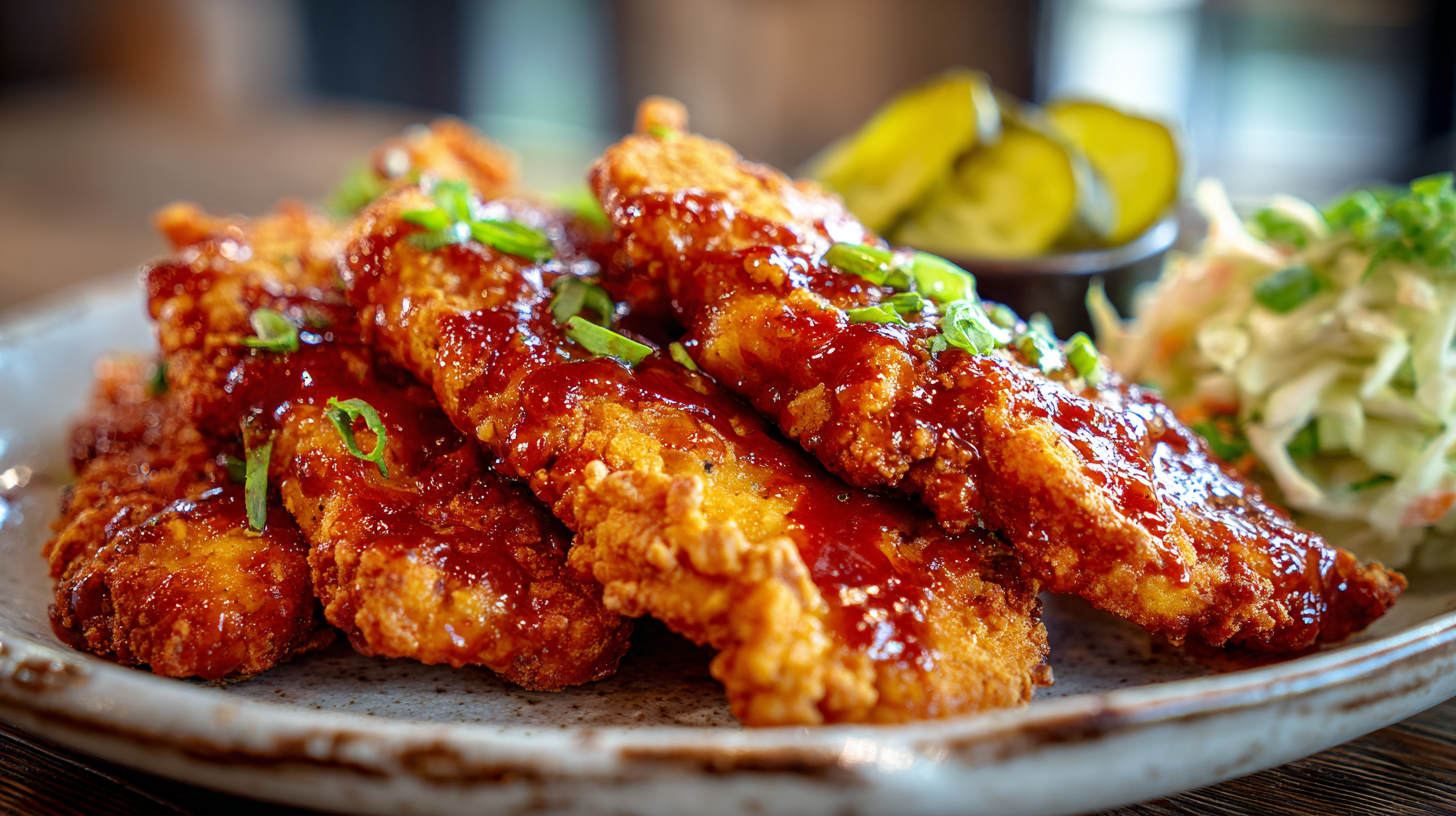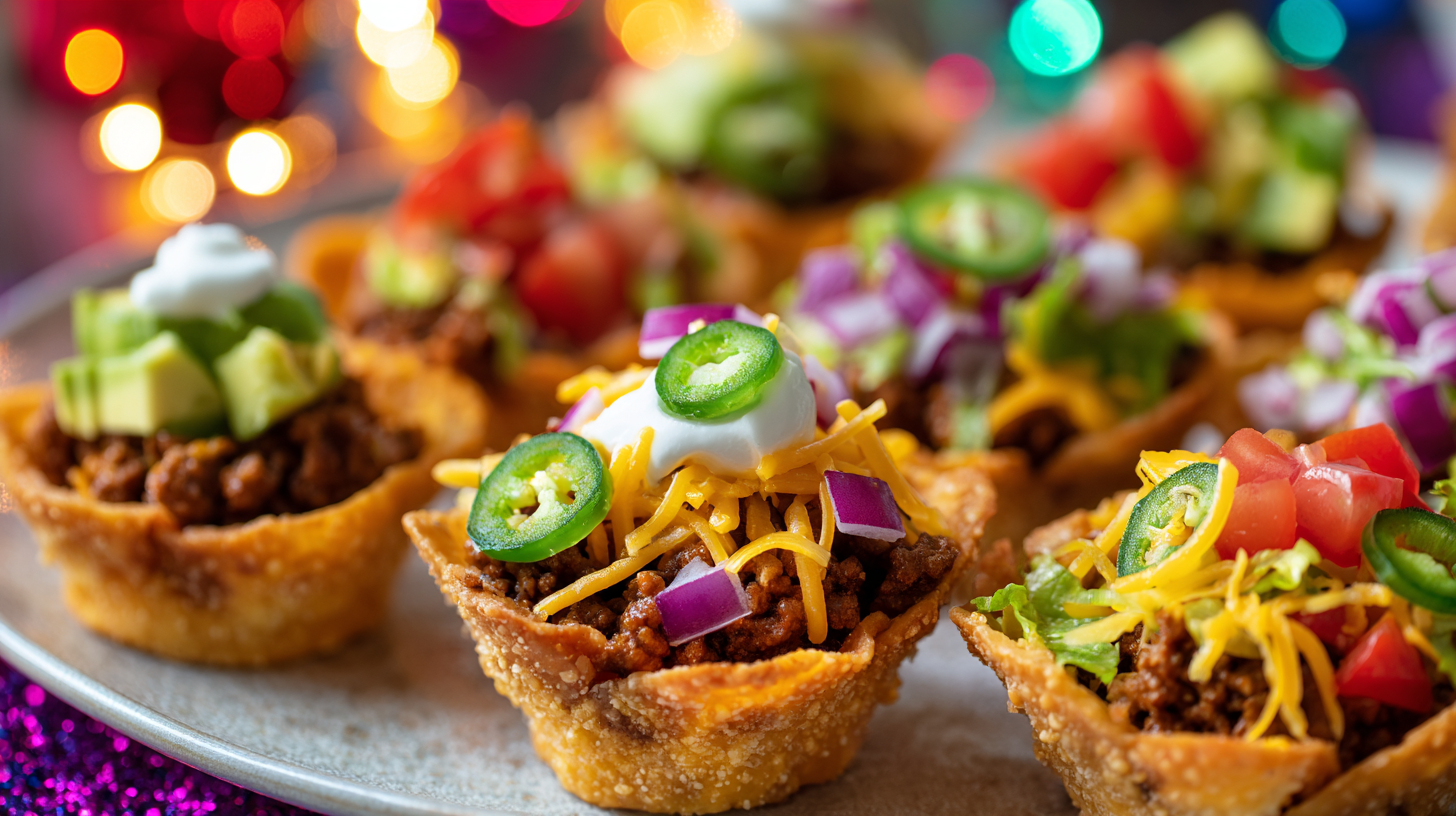➤ Table of Contents
Chicken nuggets and fries have become a staple in fast food culture, beloved by people of all ages. This article delves into the world of chicken nuggets and fries, exploring their origins, variations, and the best ways to enjoy them.
Introduction to Chicken Nuggets and Fries
Chicken nuggets and fries are more than just a quick meal; they are a part of modern culinary culture. Originating as convenient fast food options, they have evolved into dishes with numerous variations and a significant cultural impact.
What Exactly Is A Chicken Nugget?
Chicken nuggets, a popular snack and fast-food item, have a unique appeal that can be attributed to their preparation methods and ingredients. These bite-sized, crispy delights are primarily prepared using two distinct methods, each contributing to their special characteristics:
Ground Meat Method:
- Preparation: This method starts with white meat chicken, typically the breast, which is ground or pureed. The grinding process ensures a uniform texture, which is crucial for the nugget’s consistency.
- Ingredients: After grinding, the chicken is mixed with various spices and seasonings. These can include salt, pepper, garlic powder, and sometimes herbs or other flavor enhancers. The exact blend of spices plays a significant role in the nugget’s final taste.
- Shaping: The ground chicken mixture is then shaped into nuggets. This can be done manually or with machines in commercial production. The shape is not just for aesthetics; it also ensures even cooking.
- Coating: Before frying, these shaped nuggets are often coated in a batter or breadcrumb mixture. This coating, once fried, provides the nugget’s signature crispy exterior.
- Cooking: The final step is deep frying. This cooking method is quick and gives the nuggets a golden-brown color and a crunchy texture. The high temperature of the oil also helps in sealing the flavors.
Whole Meat Method:
- Preparation: This method uses whole, bite-sized pieces of chicken breast. Unlike the ground meat method, the chicken is not processed, retaining its natural texture.
- Breading: The whole chicken pieces are breaded, a process that involves coating the chicken in a sequence of flour, beaten egg, and breadcrumbs or a similar coating. This breading is key to creating a crunchy exterior while keeping the inside moist.
- Seasoning: Seasonings can be added either to the breading mixture or directly to the chicken. This method allows for more texture and flavor variations, as each piece can have a slightly different seasoning profile.
- Cooking: Like the ground meat nuggets, these are also deep-fried. The frying process cooks the chicken quickly, ensuring it remains juicy inside while forming a crispy outer layer.
In summary, the specialness of Chicken Nuggets and Fries lies in their preparation methods. The ground meat method offers a uniform, spice-infused taste with a consistent texture, while the whole meat method highlights the natural texture of chicken with varied seasoning profiles, encased in a crispy breading. Both methods deliver the quintessential experience of a crunchy exterior with a tender, flavorful interior that makes chicken nuggets a beloved dish worldwide. For those interested in a healthier version, consider reading about Grilled Chicken Nuggets – A Delicious and Healthy Choice.

Taste Test and Rankings
Conducting a taste test of chicken nuggets from various fast-food chains can provide fascinating insights into the subtle differences in preparation, seasoning, and cooking techniques that contribute to the overall appeal of this popular snack. In this particular taste test, the chicken nuggets were evaluated based on three key criteria: crispiness, flavor, and the meat to breading ratio. These factors are crucial in determining the quality and enjoyment of chicken nuggets.
Crispiness:
- This aspect is critical as it contributes significantly to the texture and overall eating experience. A perfect nugget should have a satisfying crunch when bitten into, without being overly hard or greasy. The crispiness is often a result of the breading technique and the frying process.
Flavor:
- The flavor profile of chicken nuggets can vary greatly depending on the spices and seasonings used. It’s not just about the taste of the chicken itself but also about how well the breading complements the meat. The best nuggets strike a balance between the natural flavor of the chicken and the seasonings used.
Meat to Breading Ratio:
- A crucial factor that can make or break a chicken nugget is the ratio of meat to breading. Too much breading can overpower the chicken, making the nugget feel heavy and overly greasy. On the other hand, too little breading might result in a lack of texture and flavor. The ideal nugget should have a harmonious balance, ensuring each bite is both flavorful and satisfying.
In this taste test, Wendy’s chicken nuggets emerged as the top choice, particularly excelling in robust flavor and crispiness. This suggests that Wendy’s has mastered the art of seasoning and cooking their nuggets to achieve an optimal balance of these key elements:
- Robust Flavor: Wendy’s nuggets likely use a unique blend of spices that gives them a distinctive and appealing taste. This robust flavor profile indicates a well-thought-out recipe that enhances the natural taste of the chicken.
- Optimal Crispiness: Achieving the perfect level of crispiness requires precise cooking techniques. Wendy’s nuggets might be fried at the ideal temperature for the right amount of time, resulting in a perfectly crispy exterior without being overly dry or oily.
The results of this taste test highlight the nuances that go into creating a seemingly simple dish like Chicken Nuggets and Fries. Factors like seasoning, cooking technique, and the balance of ingredients play a significant role in determining the final quality, making some nuggets stand out more than others in a competitive fast-food landscape.
The Perfect Companion – Fries
Fries, in their various forms, are often considered the ideal side dish to accompany Chicken Nuggets and Fries, creating a classic and beloved pairing in the realm of comfort food. The contrast between the crispy, golden fries and the succulent, flavorful chicken nuggets offers a satisfying culinary experience, especially when enhanced with a selection of dipping sauces. Let’s delve into the best types of fries for pairing with chicken nuggets:
Classic Cut Fries:
- These are the traditional, medium-thick fries that many associate with classic fast-food meals. Their size and texture make them a versatile choice, providing a satisfying balance of crispy exterior and fluffy interior. Classic cut fries are substantial enough to complement the texture of chicken nuggets without overpowering them.
Crinkle-Cut Fries:
- Recognizable by their wavy texture, crinkle-cut fries offer an added dimension of crunchiness due to their unique shape. This increased surface area allows for more crispy edges, making them a delightful contrast to the tender chicken nuggets. Their fun shape and texture can also be appealing, especially to younger diners.
Shoestring Fries:
- These are thin, crispy fries that offer a delicate crunch. Due to their slender size, shoestring fries provide a lighter accompaniment to chicken nuggets, ensuring that the focus remains on the nuggets themselves. They are particularly good at absorbing flavors from dipping sauces, enhancing the overall taste experience.
The combination of crispy fries with succulent chicken nuggets creates a harmonious blend of textures and flavors. When these elements are paired with a variety of dipping sauces – ranging from classic ketchup and barbecue sauce to more gourmet options like aioli or honey mustard – the experience becomes even more enjoyable. The sauces not only add moisture but also introduce new flavor profiles, elevating the simple act of eating fries and nuggets into a more dynamic and satisfying meal.
For those interested in the nutritional aspects of this pairing, especially the chicken nuggets, resources like Healthline’s Nutritional Guide can be invaluable. Such guides offer insights into the calorie count, macronutrient distribution, and potential health benefits or drawbacks of consuming Chicken Nuggets and Fries. This information can be particularly useful for health-conscious individuals or those monitoring their dietary intake. Understanding the nutritional content can help in making informed choices about portion sizes and frequency of consumption, ensuring that one can enjoy this classic combo in a balanced and health-aware manner.
Nutritional Considerations about Chicken Nuggets and Fries
Chicken nuggets and fries are undoubtedly tasty treats, but it’s crucial to be mindful of their nutritional profile:
Caloric Density: Both chicken nuggets and fries are typically high in calories. This is primarily due to the cooking methods involved, such as deep-frying, which significantly increases the calorie content. Consuming them in large quantities or too frequently can contribute to an excessive caloric intake, which may lead to weight gain and associated health issues.
Fat Content: A major concern with these foods is their high fat content, especially saturated and trans fats. These types of fats are often found in fried foods and can raise cholesterol levels, increasing the risk of heart disease. Moreover, the process of frying can lead to the formation of unhealthy compounds like acrylamide, which is associated with an increased risk of cancer.
Healthier Alternatives:
- Grilled Options: Choosing grilled chicken over fried nuggets can significantly reduce the intake of unhealthy fats and calories. Grilled chicken retains the protein content and provides essential nutrients without the added fats from frying.
- Homemade Recipes: Preparing chicken nuggets and fries at home allows for control over the ingredients and cooking methods. For instance, baking or air frying can be healthier alternatives to deep-frying. Using whole, unprocessed ingredients also reduces the intake of preservatives and artificial additives commonly found in fast-food versions.
Nutritional Balance: Incorporating these foods as part of a balanced diet is key. Pairing them with healthier sides like fresh vegetables or a salad can help balance the meal, providing essential nutrients and fiber.
In summary, while Chicken Nuggets and Fries are enjoyable, being aware of their high calorie and fat content is important. Opting for grilled versions or preparing them at home using healthier cooking methods and ingredients can make these favorites part of a more balanced and nutritious diet.

Cooking at Home
Making chicken nuggets and fries at home allows for healthier and customizable versions. Here are some tips:
Chicken Nuggets
Whole Wheat Breadcrumbs: Using whole wheat breadcrumbs not only adds a healthier aspect due to their higher fiber content but also gives a nuttier, richer flavor. For an even healthier version, you can make your own breadcrumbs using whole grain bread.
Baking Instead of Frying: Baking chicken nuggets is a great way to reduce fat content. To achieve a crispy texture, preheat your oven to a high temperature (around 425°F or 220°C) and use a lightly greased baking sheet. You can also use parchment paper or a silicone baking mat for easier cleanup.
Lean Chicken Cuts: Opt for lean cuts of chicken like breast meat. Trim any visible fat before cutting the chicken into nugget-sized pieces. This not only reduces fat content but also ensures a consistent texture.
Seasoning: Enhance the flavor with healthy seasonings. Mix herbs like oregano, thyme, or parsley into your breadcrumb mixture. Adding a bit of grated Parmesan cheese can also add a lot of flavors without much fat.
Egg Wash Alternative: Instead of traditional egg wash, you can use a mixture of low-fat milk or a plant-based milk alternative to help the breadcrumbs adhere to the chicken.
Fries
Healthy Potato Choices: Besides regular potatoes, consider using sweet potatoes for a higher vitamin content and a lower glycemic index. You can also experiment with other vegetables like carrots or parsnips for variety.
Baking Fries: Just like the nuggets, baking fries is a healthier alternative to frying. Toss your cut potatoes in a small amount of olive oil and your choice of seasonings. Arrange them in a single layer on a baking sheet to ensure they cook evenly and get crispy.
Seasoning Options: Get creative with seasonings. Try paprika, garlic powder, or a sprinkle of rosemary for a gourmet touch. A light dusting of sea salt after baking can enhance the flavor without overdoing the sodium.
Cutting Techniques: Cut your fries uniformly for even baking. Experiment with shapes – traditional sticks, wedges, or even round slices for a change.
Soaking for Crispiness: If using regular potatoes, soak them in cold water for at least 30 minutes before baking. This step removes excess starch and helps in achieving a crispier texture.
Additional Tips
- Air Frying: If you have an air fryer, it’s a great tool for making both nuggets and fries with minimal oil.
- Serving Suggestions: Serve with homemade dips like Greek yogurt-based sauces, salsa, or a light honey mustard sauce.
- Nutritional Yeast: For a cheesy flavor without the cheese, sprinkle nutritional yeast on your nuggets or fries.
FAQs about Chicken Nuggets and Fries
1. What are the best dipping sauces for Chicken Nuggets and Fries?
Answer: The choice of dipping sauce can significantly enhance the flavor of chicken nuggets. Some of the most popular options include:
- Barbecue Sauce: Offers a smoky and slightly sweet flavor, perfect for those who enjoy a touch of tanginess.
- Honey Mustard: Combines the sweetness of honey with the tang of mustard, creating a balanced and flavorful dip.
- Ranch Dressing: Creamy and herby, ranch is a favorite for those who prefer a smoother, milder dip.
- Sweet and Sour Sauce: Provides a delightful contrast with its dual flavor profile, adding a zesty twist.
- Buffalo Sauce: Ideal for those who love a spicy kick, buffalo sauce adds heat and depth to the nuggets.
- Ketchup: A classic choice, simple yet beloved, especially by children, for its sweet and familiar taste.
2. How can I make gluten-free Chicken Nuggets and Fries?
Answer: To make gluten-free chicken nuggets, you need to substitute traditional breadcrumbs and flour with gluten-free alternatives. Here’s a simple method:
- Ingredients: Use gluten-free flour (like almond or coconut flour) for the initial coating, and crushed gluten-free cornflakes or panko for the crispy outer layer.
- Preparation: Follow the standard nugget-making process – coat the chicken pieces in gluten-free flour, dip them in beaten eggs, and then roll them in your gluten-free breading.
- Cooking: Fry or bake the nuggets as you would with regular Chicken Nuggets and Fries. Ensure the oil or other ingredients used in cooking are also gluten-free.
3. Are there vegetarian alternatives to Chicken Nuggets and Fries?
Answer: Yes, there are several vegetarian alternatives to chicken nuggets that mimic the texture and flavor of chicken. These include:
- Tofu Nuggets: Made from tofu, which is high in protein and can be seasoned and textured to resemble chicken.
- Seitan Nuggets: Seitan, made from wheat gluten, has a meaty texture and absorbs flavors well, making it a popular choice.
- Cauliflower Nuggets: Cauliflower florets can be breaded and baked or fried, offering a nutritious and flavorful alternative.
- Mushroom Nuggets: Certain mushrooms, like oyster or portobello, have a meaty texture and can be used as a base for nuggets.
- Legume-Based Nuggets: Nuggets made from beans, lentils, or chickpeas provide protein and can be seasoned to taste similar to chicken.
In conclusion, chicken nuggets and fries are not just fast food items but a part of our culinary landscape. Whether enjoying them at a restaurant or making them at home, they offer a comforting and delicious experience.





